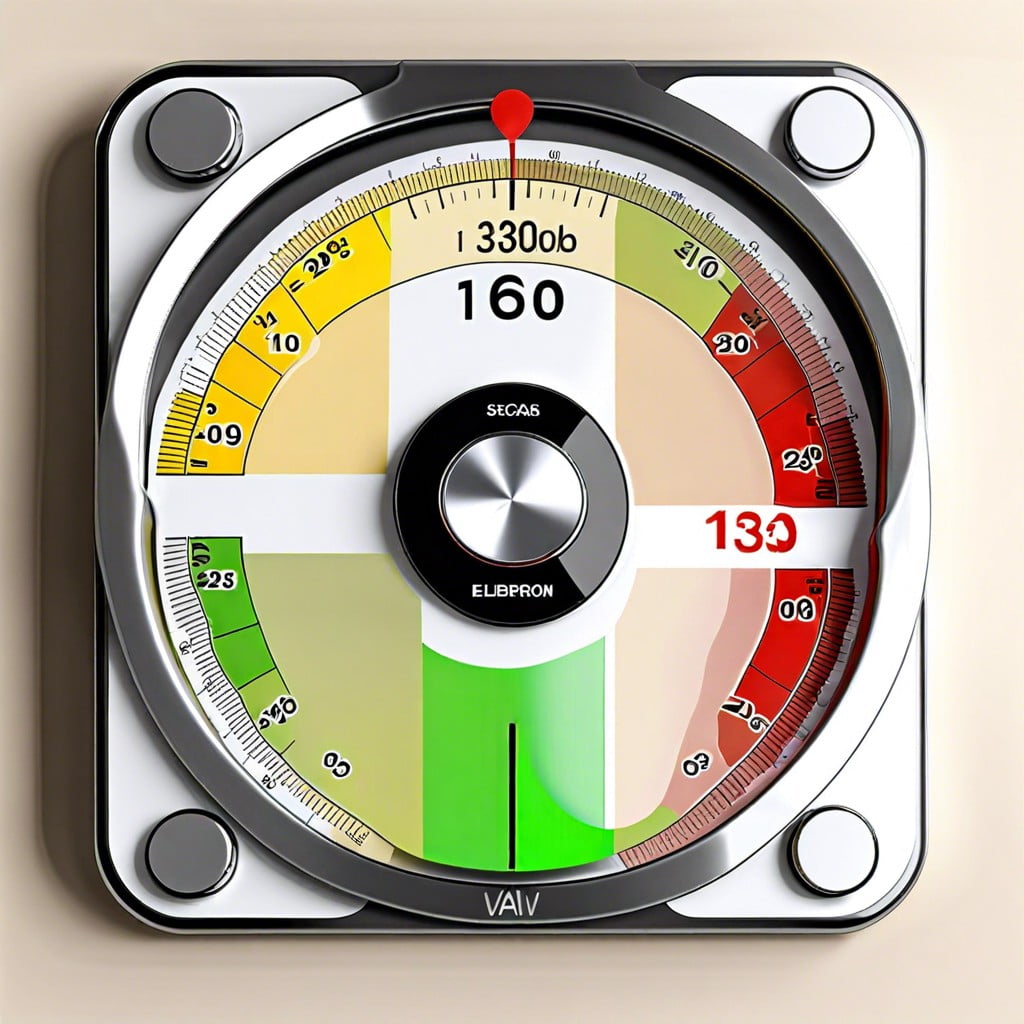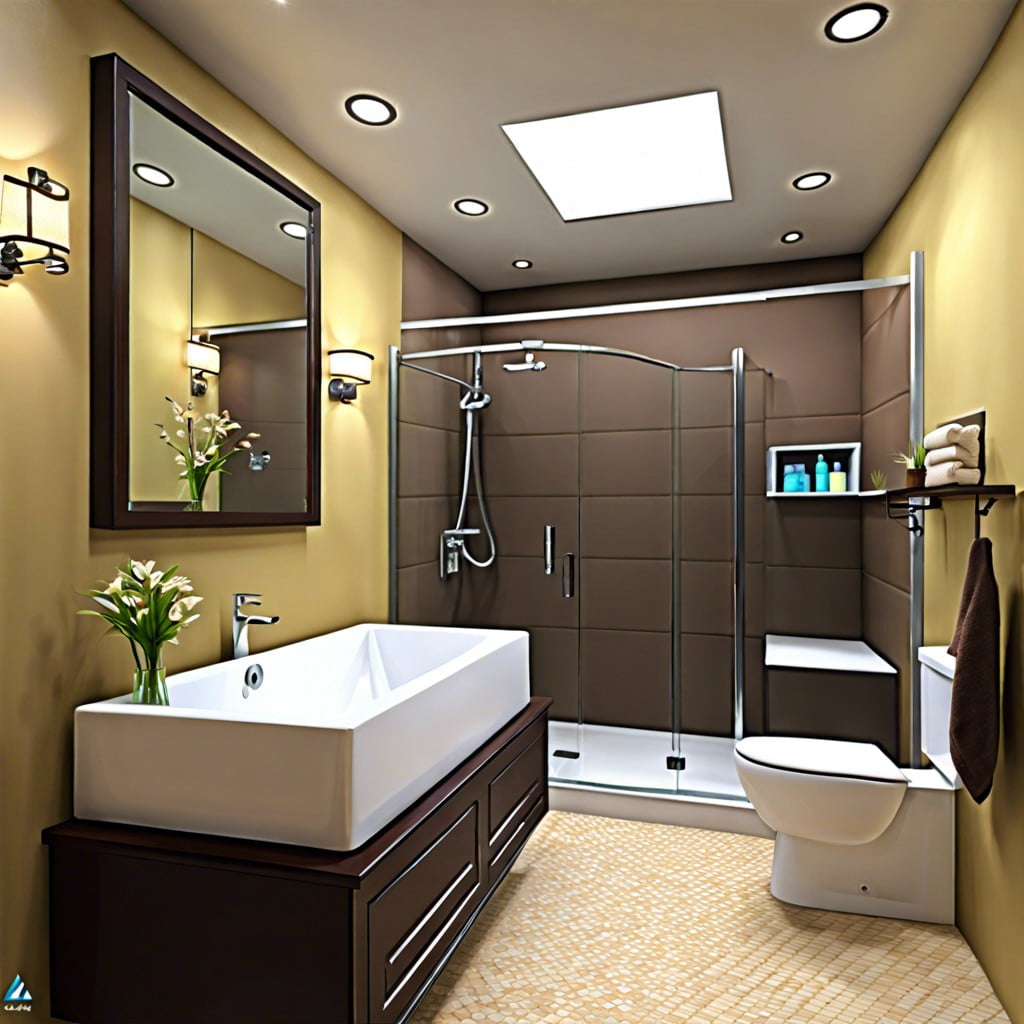Last updated on
Your scale’s fluctuating numbers might be playing tricks on you, and we’re here to reveal why that’s happening.
Key takeaways:
- Calibration missteps can throw off your weight reading.
- Uneven surfaces can skew the scale’s readout.
- Scale damage or defects can lead to inaccurate readings.
- Humidity, temperature, and air pressure can affect weight display.
- Consistent placement of the scale is crucial for accurate measurements.
Calibration Missteps

Think of your scale as a finicky device that needs a gentle wake-up call every time it moves. To work correctly, it must start from zero. Even the slightest deviation during its initial boot-up can throw off your entire weight reading.
Imagine your scale is like a pianist who needs to tune their instrument before a concert. Without proper calibration, just as a piano might hit off-key notes, your scale will display inaccurate weights.
So, to sidestep this snafu, reset your scale after moving it – a simple step often overlooked. This “zeroing out” is crucial for accuracy. Always spare a moment for this small but pivotal act, because precision in measurement is like hitting the right note in a melody – it makes all the difference.
Uneven Surfaces
Consider the floor. A surface that isn’t level will transform that trusty scale into a whimsy weathervane, pointing to numbers as stable as a house of cards in a breeze. Subtle dips or bumps act like gremlins, skewing the scale’s readout. You might be shedding pounds or gaining muscle, but an uneven floor says, “Not today!”
Now, think of your tiles or hardwood. These seemingly flat floors can be deceptive; a small tilt is enough. It’s like placing a four-legged chair on a slope: it wobbles. The scale’s sensors are just as sensitive as those chair legs, reading different weights like a seesaw in motion.
Here’s a test. Move your scale to different spots across your bathroom floor. Notice weight variations? Bingo. Hunt for the flattest terra firma and declare it the scale’s forever home. Consistency is your ally, not the quest for the ultimate truth in numbers on varied terrain.
Remember, flooring isn’t always your ally in the quest for accurate weight tracking. Treat it with a pinch of skepticism – after all, it might just be throwing your scale off balance.
Scale Damage or Defects
A perfectly good-looking scale can still be a traitor to your weight-tracking cause if it’s harboring internal injuries. Imagine the insides of your scale like a spider web; if one strand snaps, the whole web wobbles. Similarly, a drop or a knock might jumble the scale’s internal sensors, leading them to give you readings that flip-flop more than a politician’s promises.
You wouldn’t expect a cracked egg to fry up nicely on the pan, right? Same goes for your scale – the slightest internal damage can skew the weight displayed. The gear inside might as well have taken a hit, compromising its ability to measure accurately. Just as you wouldn’t trust a clock with a loose cog, stay skeptical of a banged-up scale.
It’s not even about the catastrophic tumbles. Over time, just like the knees of a seasoned runner, a scale’s components can wear down. This natural decay often goes unnoticed until your scale starts spitting out numbers that seem plucked from a lottery machine.
So before you go blaming that extra slice of pizza for a weight rollercoaster, give your scale a once-over to rule out any internal boo-boos. And remember, if it seems like it’s on its last leg, it might be time to set it free—your peace of mind will thank you for it.
Environmental Factors
Humidity and temperature play mischief-makers with your scales. On steamy days, metal components may expand subtly, throwing off accuracy. Think of it like a door swelling in the summer heat – it sticks. Scales can be just as moody.
Weight isn’t just about you; it’s about science. Air pressure might slightly alter your weight display, as high pressure can push more against the scale. It’s a quirky bit of physics that can make you scratch your head or chuckle at the complexity of air we can’t even see.
Ever weighed yourself after a hot shower? Watch for that bump in digits. Moisture from damp feet may cause the scale’s sensors to go haywire. Keep those feet dry unless you’re looking for an excuse for that extra slice of cake.
In essence, those numbers can dance with the weather. So before fretting about weight fluctuations, consider if Mother Nature might be putting her thumb on the scale.
Consistent Placement Importance
If you want your scale to stop playing musical chairs with your weight, plant it in one place and leave it there. Floors are like people’s opinions; they can be all over the place—tilted, warped, you name it. Weigh yourself on the same tile every time, and you sidestep that whole circus of varying readings.
Think of your scale as a homebody; it thrives on stability. Moving it around is like waking a bear from hibernation—disorienting and likely to give you some grouchiness in the form of inconsistent numbers. A designated spot equals peace of mind and a reliable number to work with.
So, let’s sum it up: A scale with a permanent residence is more trustworthy than a nomadic one. It’s like having a trusty hound; you treat it right, and it’s loyal. Your scale, given a consistent place to live, will serve up the straight facts, no wanderlust-induced fluctuations.
Recap




